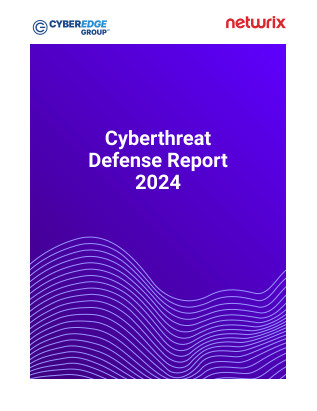Cybersecurity attacks are increasing at an alarming rate every day. According to the Statista Cybercrime Incidents Report, over 29,000 cases were recorded in 2020 and the target nowadays are small firms as well as large businesses although in the past hackers were not interested by “small fish”.
There are 5.2 billion internet users which is 63% of world population which means that the world is becoming increasingly reliant on devices that can connect to the Internet and retain data. Government agencies, manufacturing firms, customers, and people all utilize these sorts of gadgets. According to McKinsey & Company, the number of gadgets will reach 43 billion by 2023. As the amount of data saved online grows, so does the demand for cybersecurity.
It means that, now more than ever, we need to be vigilant of cybercrime, stay alert and think how we can boost our IT security levels at any cost.
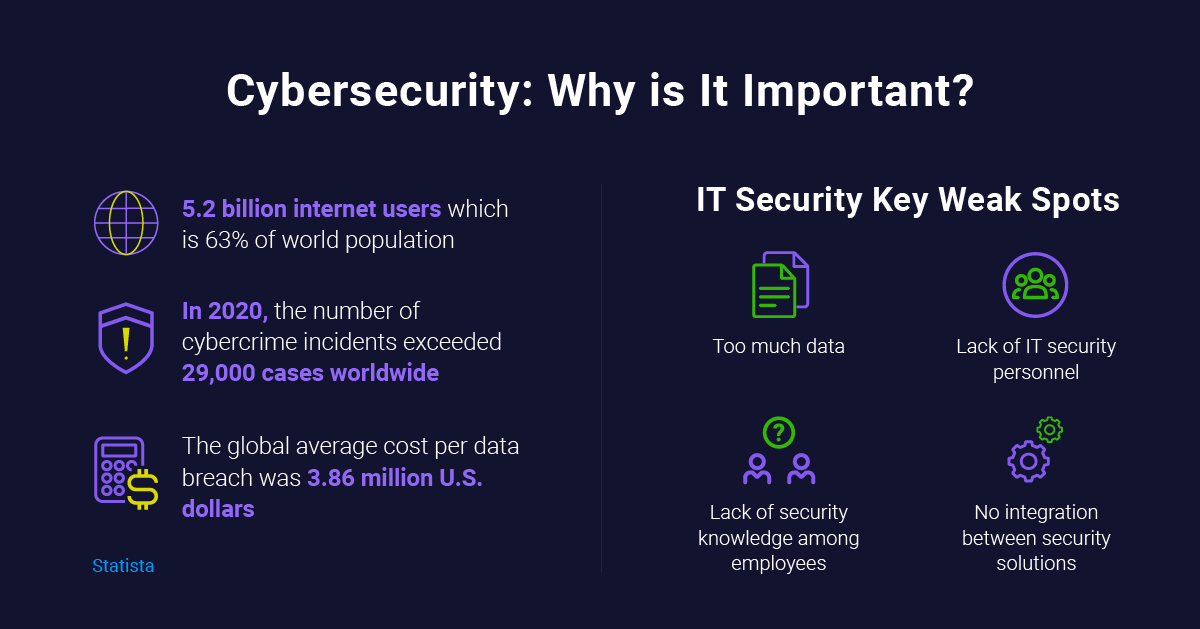
Types of Cybercrime
As the world becomes more digitalized, the world of cyber attacks becomes more thriving and sophisticated. It is important to distinguish different types of cyberattacks to be able to educate employees and prevent them single-handedly. While there are countless number of cyber attacks types we mentioned the most common ones and gathered them into 4 big groups according to their nature, commonalities and the scale of damage that they cause:
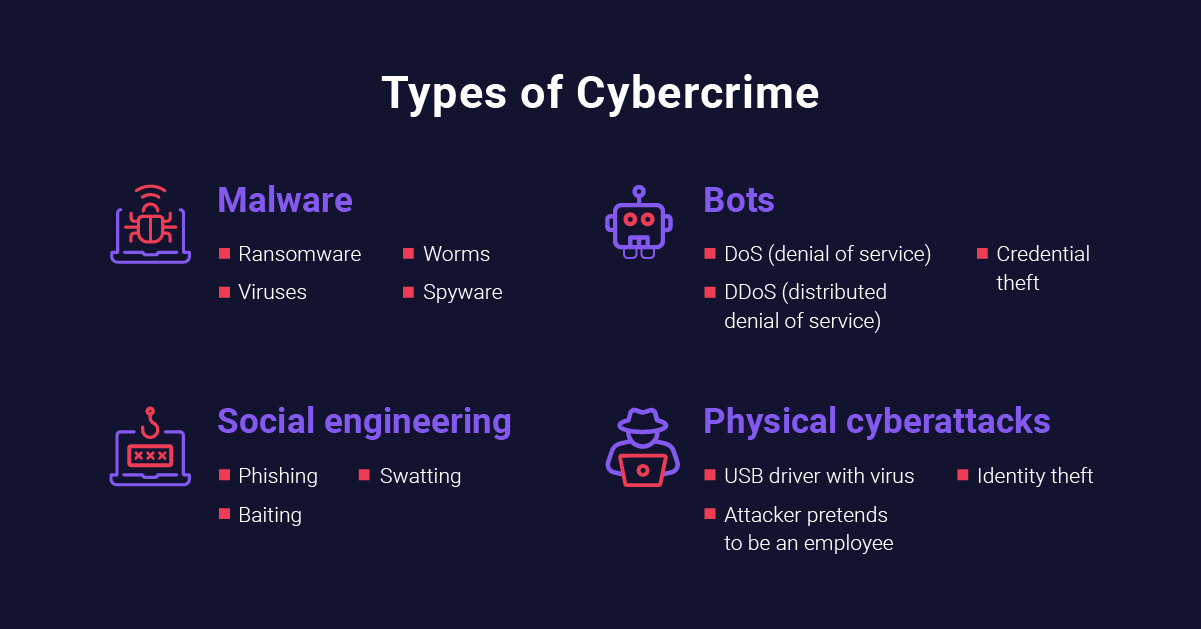
- Malware
Any software that is designed to harm, disable, or grant unauthorized access to your computer or other internet-connected device to criminals.
- Social Engineering
Criminals use social engineering to make direct contact with you, generally via phone or email. Their ultimate goal is to obtain the information they want. This is usually a password, your employer’s name, or your bank account number.
- Bots
Bots are a kind of internet-based tool that automates activities. They can be used to gather passwords, steal financial information, hack social media accounts. Also they can be used for DoS or DDoS attacks the purpose of which is to make a server or a network unavailable for users and disrupt the working process for some time.
- Physical cyberattacks
Physical cyber attacks corrupt, harm, or otherwise disrupt digital systems by using hardware, external storage devices, or other physical attack methods.
Let’s take a closer look to the most frequent types of cybercrime: ransomware and phishing.
Ransomware
Ransomware has been a persistent security issue for businesses all around the world in recent years. Cyber criminals have attempted to maximize their income by exploiting the vulnerabilities that come with a fast expanding ecosystem as businesses have gone more digital. Ransomware is a form of malicious software that prohibits you from accessing your computer files, systems, or networks and demands that you pay a ransom to regain access to them. Ransomware attacks may result in costly operational interruptions as well as the loss of vital information and data.
Opening an email attachment, clicking an ad, clicking a link, or even visiting a malware-infected website can all unintentionally download ransomware onto your machine.
When the code is installed on a computer, it prevents access to the computer, as well as the data and files stored on it. Files and folders on local disks, connected drives, and even networked PCs can be encrypted in more advanced versions.
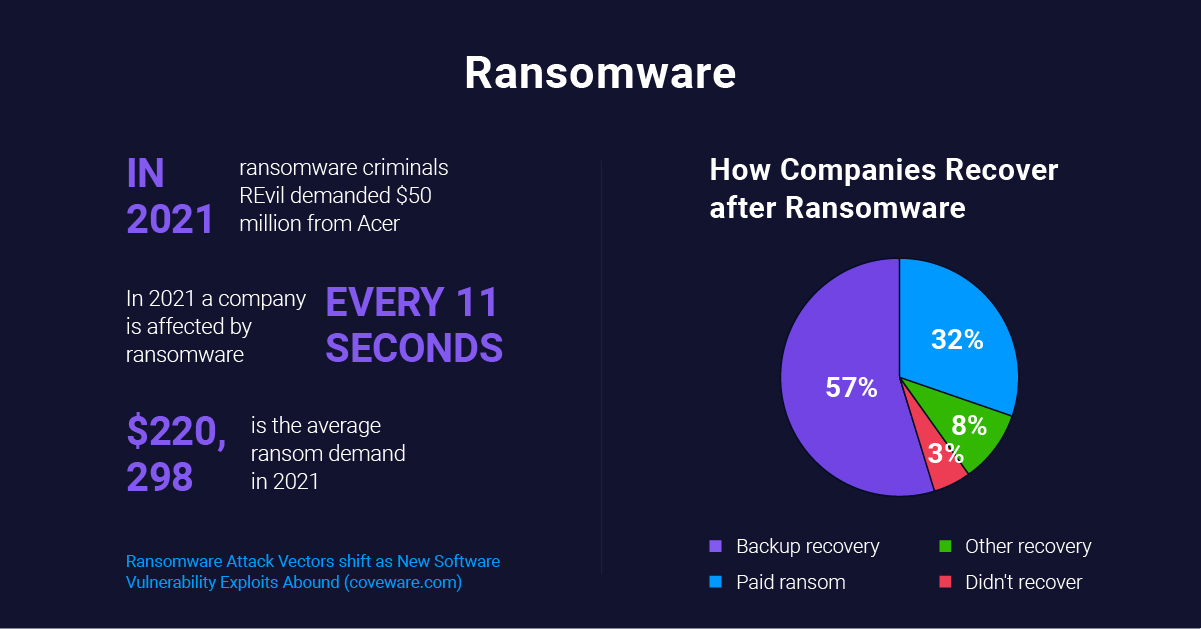
Phishing
Phishing is one of the most common types of cybercrime. Hackers send malicious email attachments or URLs to users in order to obtain access to their accounts or computers. Many of these emails are not identified as spam and they usually have the subject lines that include such typical keywords as “urgent”, “attention”, “payment”, “request” and “important”. Users are lured into clicking on links in emails that suggest they need to change their password or update their payment information, allowing thieves access to their accounts.
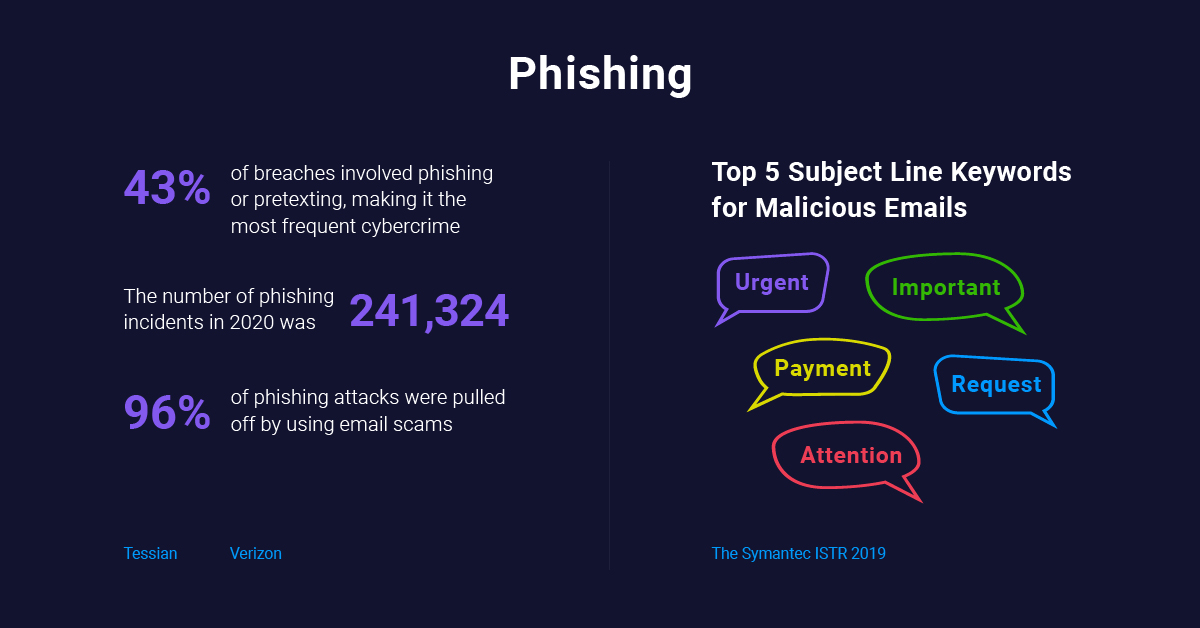
Tips on how to better protect your users
After we discussed different types of cyberattacks and increased your general awareness about cyberattacks types, it’s time to talk about the basic precautions you need to take to mitigate a risk of a breach.
Hackers seem to be taking over our systems in the contemporary era of technology, and no one seems to be secure. Many people are vulnerable to cybercrime, therefore it’s critical to educate yourself and others on the precautions you may take to protect yourself as an individual or as a company. In this cybersecurity awareness month focus on small but important things we list below and keep your users aware of the potential threats and how to react and report if they become a target of a cybercrime.
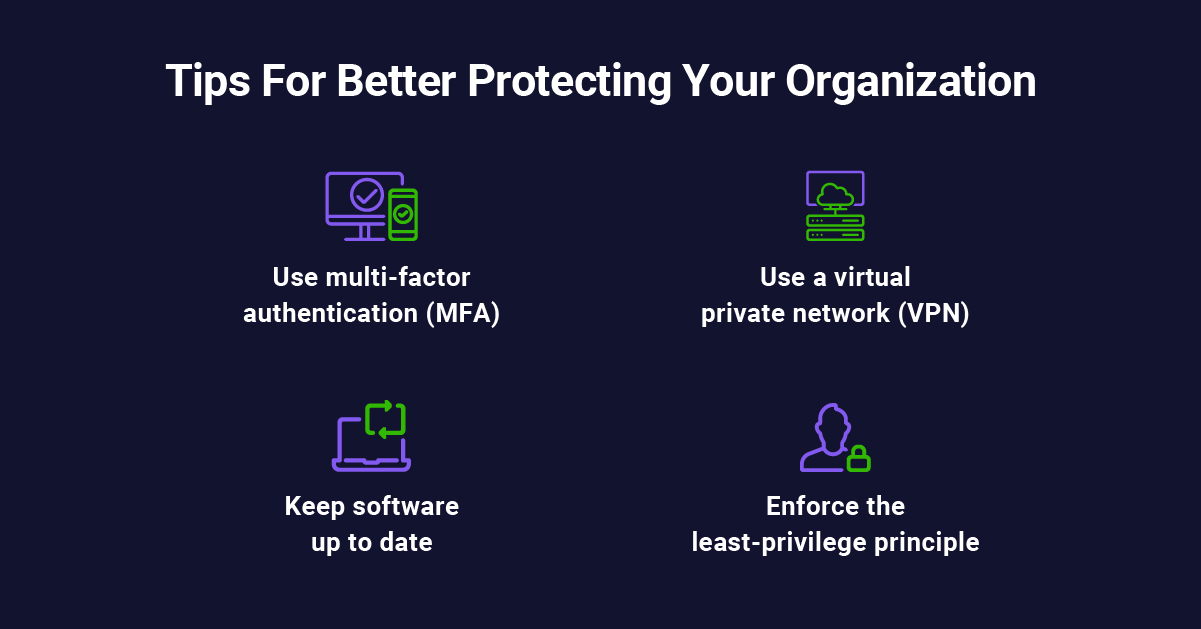
Good old cybersecurity basics to strengthen your security:
- Reinforce login process
Adopt a multi-factor authentication (MFA) process to double protection of accounts and data.
- Update your software
Keep your software up to date, and set your security software to conduct check-ups on a regular basis.
- Secure your network
A Virtual Private Network, is another way to protect from cybercriminals. VPNs automatically encrypt data, making it impossible for cyber thieves to view the content of your messages or their origin.
- Least Privilege Principle
Only the bare minimum of rights for the shortest period of time should be granted to a subject who seeks access to a resource.
The world of Internet is an intimidating place for both businesses and individuals. You cannot possibly secure sensitive information without effective measures reinforcing cyber security across organizations.



